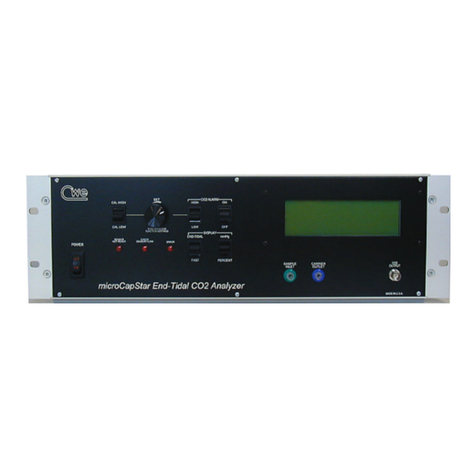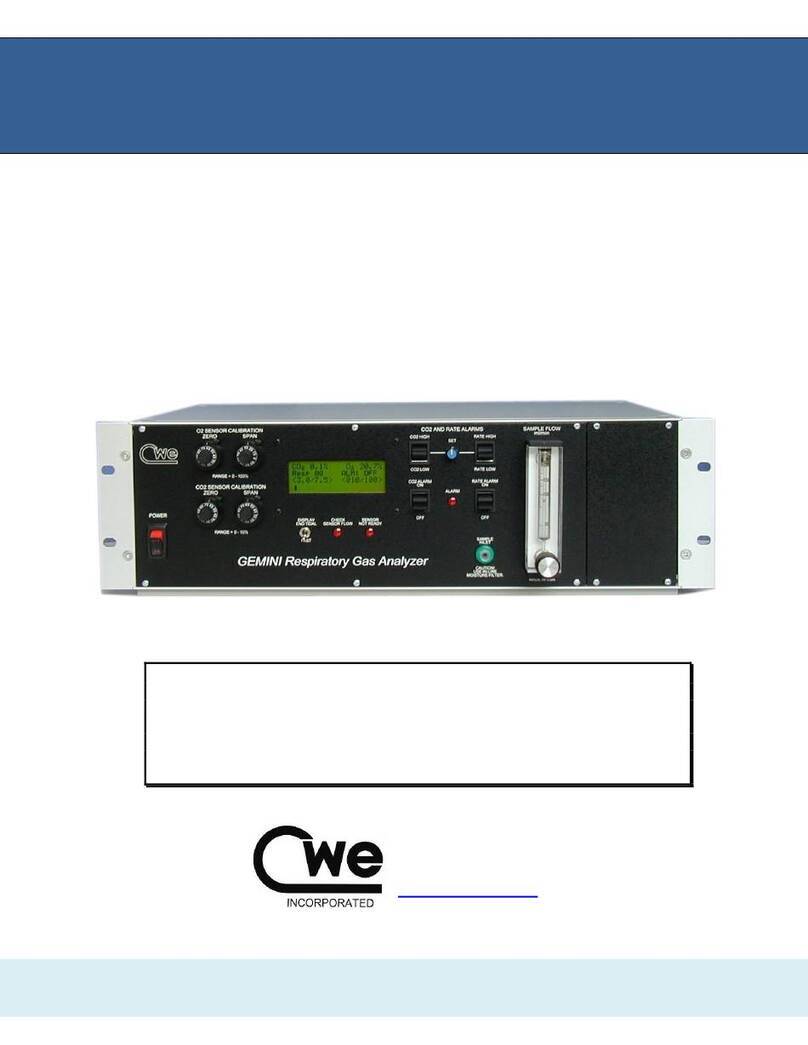CAPSTAR-100 Instruction Manual 7
© 2023 CWE, Inc.
4.0 OPERATION
4.1 SAMPLE FLOW
The SAMPLE FLOW knob on the front panel is used to regulate the sample
flow to the sensing cell. This flow is internally measured by a mass flow
sensor and displayed on the display as: S:050cc
The response time of the analyzer is directly proportional to the sample
flow rate. Although the analyzer will work with rates as low as 10cc/min,
optimum response time is realized with sampling in the 35 –100 ml/min
range. To avoid depleting the available expired volume with mechanically
ventilated small animals, the analyzer sample flow can be returned to the
breathing circuit. This will result in a net volume change of zero. The
sample outlet port on the rear panel is provided for this purpose. Be sure
to return the volume to a point distal from the sample point to prevent
diluting the end-tidal sample.
For use with rodents and similar sized animals, special considerations are
necessary because of their very small volumes and fast respiratory rates.
The volume of the sample tubing must be as small as possible to prevent
sample dilution and minimize the gas transit time from the sample point to
the analyzer cell. Follow the instructions below to achieve optimal end-
tidal measurements with small animals.
4.11 MINIMIZING SAMPLE TUBING VOLUME
Ideally, the SAMPLE INLET should be connected directly to the
endotracheal tube as close to the animal as possible, ALWAYS
using a small hydrophobic in-line filter at the CAPSTAR-100
SAMPLE INLET port. Several centimeters of small-bore tubing is
acceptable between the sample port and the tracheal connection if
the sample rate is kept reasonably high. Avoid large moisture
absorbers, which typically have a substantial internal volume.
Moisture-reducing sample tubing, such as Nafion®, is ideal, and is
included in the Accessories Kit provided with the instrument. The
CO2sample cell itself is heated, and will not condense water vapor.
Be careful to keep the sample tubing free of liquid water, however.
(see Connection Diagram, p.14)
Note: Never operate the instrument without
the in-line hydrophobic disk filter!





























